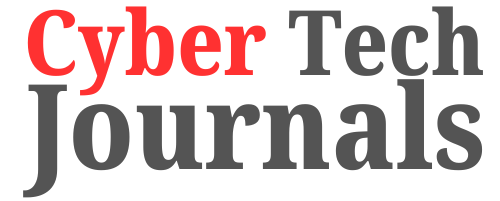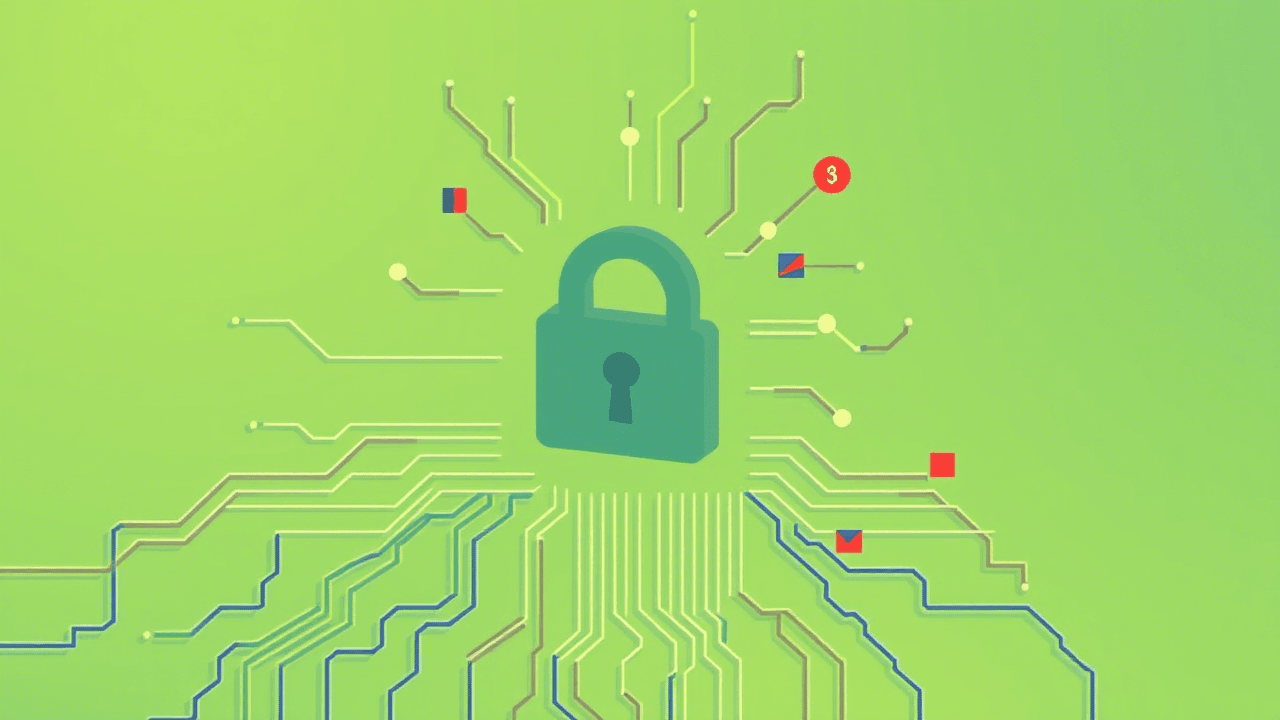Introduction
Did you know that by 2025, cybercrime is projected to cost the global economy $10.5 trillion annually? That’s more than the GDP of most countries! With AI-driven attacks, quantum hacking, and IoT vulnerabilities becoming mainstream, no one is immune to data breaches anymore.
Whether it’s your email, passwords, or sensitive financial information, knowing how to detect a breach early can save you from devastating consequences like identity theft, financial fraud, or reputational damage.
In this guide, I’ll walk you through everything you need to know about identifying if your data was compromised in the latest breach—and what to do next. Let’s get started!
1. What Is a Data Breach in 2025? Understanding the Threat Landscape
A data breach occurs when unauthorized individuals gain access to sensitive, confidential, or protected information. In 2025, breaches are no longer just about stolen credit card numbers—they now involve biometric data, AI-generated deepfakes, and even quantum decryption of encrypted files.
- Key Statistics: Over 60% of businesses will experience a breach by 2025, with personal data being the most targeted asset.
- New Attack Vectors: Hackers are leveraging AI-powered phishing emails, deepfake scams, and IoT device vulnerabilities to exploit weaknesses faster than ever before.
- Why It Matters: Breaches are harder to detect and mitigate due to advancements in technology, making proactive measures essential.
Types of Data Commonly Stolen in Breaches (2025 Projections)
| Data Type | Percentage of Breaches | Examples |
|---|---|---|
| Personal Identifiers | 45% | Social Security Numbers, Driver’s Licenses |
| Financial Information | 30% | Credit Card Numbers, Bank Account Details |
| Health Records | 15% | Medical Histories, Insurance Info |
| Biometric Data | 10% | Fingerprints, Facial Recognition Data |
2. How to Know If Your Data Was Exposed in the Latest Breach
The first step in protecting yourself is determining whether your data has been compromised. Here’s how:
- Use Breach Detection Platforms: Tools like Have I Been Pwned , DeHashed , or Firefox Monitor allow you to check if your email or phone number has appeared in any known breaches. Simply enter your details, and these platforms will scan their databases for matches.
- Set Up Alerts: Many services now offer real-time notifications if your accounts are involved in a breach. For example, Google’s Password Checkup extension alerts users when their credentials have been exposed.
- Monitor for Signs of Compromise: Look for unusual activity such as unexpected password reset emails, unauthorized login attempts, or unfamiliar transactions on your bank statements.
- Leverage AI-Based Monitoring Tools: Advanced tools like SpyCloud and BreachSense use artificial intelligence to scan the dark web for leaked credentials and alert you instantly.
Growth of Data Breaches (2020–2025)
Below is a graph showing the steady increase in reported data breaches over the past five years, with projections for 2025:
By 2025, experts predict that over 1 billion records will be exposed annually due to data breaches, with the global cost of cybercrime reaching $10.5 trillion.
3. Top Tools and Technologies to Detect Data Breaches in 2025
Staying ahead of cybercriminals requires cutting-edge tools. Here are some of the best options available in 2025:
- Advanced Platforms :
- SpyCloud: Monitors the dark web for stolen data and provides actionable insights.
- BreachSense: Uses AI to predict potential breaches based on emerging threats.
- CyberScan AI: Scans your devices and accounts for vulnerabilities in real-time.
- Browser Extensions :
- Blur: Protects your online identity and alerts you to breaches.
- Myki: Acts as both a password manager and breach detector.
- Blockchain Technology: Blockchain-based solutions verify data integrity and detect tampering, ensuring your information remains secure.
- Free vs. Premium Tools: While free tools like Have I Been Pwned are great for basic checks, premium tools often provide deeper insights and proactive monitoring features.
Comparison of Popular Breach Detection Tools (2025)
| Tool Name | Cost | Features | Best For |
|---|---|---|---|
| Have I Been Pwned | Free | Checks if your email/phone was breached | Individuals |
| SpyCloud | Paid ($9.99/mo) | Dark web monitoring, AI-driven alerts | Small Businesses |
| BreachSense | Paid ($14.99/mo) | Predictive analytics, threat intelligence | Enterprises |
| Blur | Free/Paid | Identity protection, breach alerts | Privacy-Conscious Users |
4. Immediate Steps to Take If Your Data Was Compromised
If you discover that your data was exposed, act quickly to minimize the damage:
- Change All Affected Passwords: Use a password manager like LastPass or Dashlane to generate strong, unique passwords for each account.
- Enable Multi-Factor Authentication (MFA): Add an extra layer of security to your accounts to prevent unauthorized access.
- Notify Financial Institutions: If financial data was exposed, contact your bank or credit card provider immediately to freeze accounts or issue new cards.
- Freeze Your Credit: Place a credit freeze with major credit bureaus (Equifax, Experian, TransUnion) to prevent identity thieves from opening accounts in your name.
- Monitor Your Accounts: Regularly review your bank statements, credit reports, and other financial records for suspicious activity.
5. How to Protect Yourself from Future Breaches in 2025
Prevention is key to staying safe in an increasingly digital world. Follow these tips to safeguard your data:
- Adopt Quantum-Safe Encryption: As quantum computing becomes more prevalent, traditional encryption methods may become obsolete. Use quantum-resistant algorithms to protect sensitive communications.
- Use Biometric Authentication: Replace passwords with fingerprint or facial recognition for added security.
- Update Software Regularly: Keep all software, firmware, and IoT devices up-to-date to patch vulnerabilities.
- Educate Yourself on AI Threats: Learn to recognize AI-generated phishing emails and deepfake scams to avoid falling victim to sophisticated attacks.
- Limit Sharing Personal Information Online: Be cautious about what you post on social media and avoid oversharing details that could be used against you.
6. The Role of AI and Quantum Computing in Cybersecurity
AI and quantum computing are reshaping the cybersecurity landscape in profound ways:
- AI-Powered Attacks: Hackers are using AI to automate attacks, create convincing phishing emails, and bypass traditional security measures.
- Quantum Hacking: Quantum computers can break traditional encryption methods, posing a significant threat to data security.
- Predictions for 2025: Experts predict that AI-driven defenses and quantum-safe encryption will become standard practices for protecting sensitive data.
- Zero-Trust Architecture: This approach assumes that no user or device is inherently trustworthy, requiring continuous verification to prevent breaches.
Comparison of Traditional vs. Quantum Encryption
| Feature | Traditional Encryption | Quantum Encryption |
|---|---|---|
| Security Level | High | Near-Unbreakable |
| Vulnerability to Hacks | Susceptible to brute force | Resistant to quantum attacks |
| Adoption Rate (2025) | Widespread | Emerging |
7. Legal Rights and Resources for Victims of Data Breaches
If your data was exposed in a breach, you have rights and resources to help you recover:
- Global Data Protection Laws: Regulations like GDPR (Europe), CCPA (California), and LGPD (Brazil) give consumers the right to know how their data is being used and seek compensation for damages.
- Reporting a Breach: File a complaint with relevant authorities such as the FTC (Federal Trade Commission) in the U.S. or ICO (Information Commissioner’s Office) in the UK.
- Resources for Assistance: Websites like IdentityTheft.gov and Cyber Civil Defense Hotlines provide guidance and support for breach victims.
- Compensation Claims: Depending on the severity of the breach, you may be eligible for compensation through class-action lawsuits or direct claims against the responsible organization.
8. Emerging Trends in Cybersecurity for 2025
As we move closer to 2025, several trends will shape the future of cybersecurity:
- Decentralized Identity Systems: Blockchain technology enables decentralized identity management, giving users control over their personal data.
- Privacy-Preserving Technologies: Innovations like homomorphic encryption allow data to be processed without exposing it, enhancing privacy.
- Behavioral Analytics: Advanced systems analyze user behavior to detect insider threats and anomalies.
- Government and Corporate Collaboration: Governments and corporations are working together to combat cybercrime globally, sharing intelligence and resources.
Data breaches are no longer just a possibility—they’re a certainty in our hyper-connected world. By staying informed and taking proactive steps, you can minimize the risks and protect your digital life.
Remember, prevention is always better than cure. Invest in advanced tools, adopt secure habits, and stay vigilant against emerging threats. And if you’ve found this guide helpful, don’t forget to share it with others so they can stay safe too.
FAQs: Data Breaches in 2025
Q: What should I do if my data was exposed in a breach?
A : Act quickly to minimize the damage:
- Change all affected passwords and enable multi-factor authentication (MFA).
- Notify your bank or credit card provider if financial data was exposed.
- Freeze your credit to prevent identity thieves from opening accounts in your name.
- Monitor your accounts regularly for suspicious activity.
Q: How can I check if my email was hacked?
A : Use tools like Have I Been Pwned or Firefox Monitor to check if your email address has appeared in any known breaches. Additionally, look for signs like unexpected password reset emails or unauthorized login attempts.
Q: What is quantum-safe encryption?
A : Quantum-safe encryption uses algorithms resistant to quantum computing attacks. As quantum computers become more powerful, traditional encryption methods may become obsolete, making quantum-safe encryption essential for long-term data security.
Q: How can I protect myself from AI-powered phishing attacks?
A : Stay vigilant by:
- Verifying the sender’s email address before clicking links or downloading attachments.
- Using anti-phishing tools and browser extensions.
- Educating yourself on recognizing AI-generated phishing emails, which are often highly personalized and convincing.
Q: What are my legal rights if my data was exposed in a breach?
A : Under laws like GDPR (Europe) and CCPA (California), you have the right to know how your data is being used and seek compensation for damages. You can also file complaints with regulatory bodies like the FTC or ICO.
Q: Are free breach detection tools reliable?
A : Yes, free tools like Have I Been Pwned are reliable for basic checks. However, premium tools often provide deeper insights, real-time alerts, and advanced features like dark web monitoring.

















Leave a comment